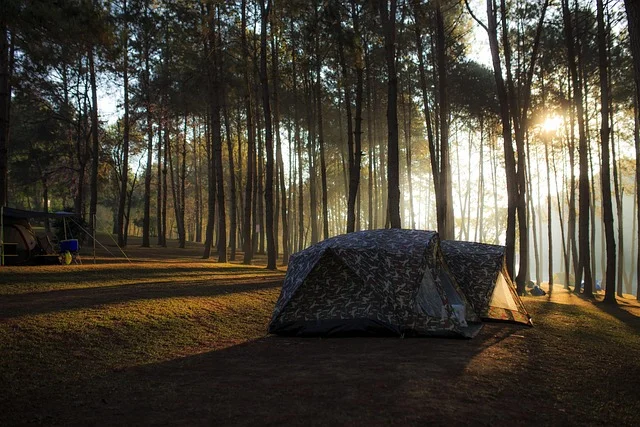
Source: Foxtechview.com
Introduction
In the world of outdoor adventures, military operations, and industrial applications, Tarnplanen — camouflage tarpaulins — play a crucial role. Whether you are a camper trying to stay dry, a hunter seeking concealment, or a professional working on field projects, a Tarnplane offers a reliable and multifunctional solution. In this guide, we’ll explore what makes Tarnplanen so effective, how they are used in different settings, their key advantages, and expert tips on how to get the most from them.
What Is a Tarnplane?
A Tarnplane (from the German word “Tarnung” meaning camouflage and “Plane” meaning tarp) is a specially designed tarpaulin made to blend into natural surroundings. Unlike regular tarps, Tarnplanen feature camouflage patterns and weather-resistant coatings that make them ideal for both concealment and protection.
These tarps are typically made from materials like polyethylene (PE), polyester (PES), or nylon, often laminated for added durability. They come in various camouflage designs such as woodland, desert, digital, or snow patterns, depending on the intended environment.
Common Uses of Tarnplanen
1. Camping and Outdoor Activities
One of the most popular uses of Tarnplanen is in camping and hiking. Campers use them to create makeshift shelters, ground covers, or rainproof canopies. Their camouflage design helps blend into natural surroundings, providing both functionality and aesthetic appeal for those seeking a more “wild” experience.
2. Hunting and Wildlife Observation
Hunters and wildlife photographers rely heavily on Tarnplanen for concealment. By setting up a small tarp blind, they can observe animals closely without disturbing them. The camouflage pattern minimizes visibility, while the waterproof material provides protection from the elements.
3. Military and Tactical Operations
In military contexts, Tarnplanen have long been standard equipment. Soldiers use them for concealment of personnel, vehicles, and equipment. The materials are often infrared-suppressive and tear-resistant, offering tactical advantages in the field.
4. Emergency and Survival Situations
A Tarnplane can serve as an emergency shelter, groundsheet, or even a signal cover in survival scenarios. Its lightweight nature makes it easy to carry in emergency kits, providing quick protection against wind, rain, or sun.
5. Construction and Industrial Use
Beyond outdoor recreation, Tarnplanen are also used on construction sites to cover building materials, scaffolding, or machinery. The camouflage aspect may not be essential here, but the durability, UV resistance, and waterproof qualities are invaluable.
Key Benefits of Tarnplanen
1. Weather Resistance
Tarnplanen are designed to withstand extreme conditions — from heavy rain and strong winds to harsh sunlight. The materials are usually UV-stabilized and waterproof, ensuring long-term reliability.
2. Durability and Strength
Compared to standard tarps, Tarnplanen are built to last. They feature reinforced edges, metal eyelets, and tear-resistant fabrics, making them suitable for demanding applications.
3. Concealment and Stealth
The most distinctive advantage of a Tarnplane is its camouflage effect. Whether for hunting, photography, or tactical use, it helps you blend seamlessly into natural surroundings, reducing visibility from both humans and animals.
4. Versatility
A single Tarnplane can serve multiple purposes — from a tent fly to a sunshade or equipment cover. This versatility makes it an essential piece of gear for anyone who spends time outdoors.
5. Portability
Despite their toughness, Tarnplanen are lightweight and foldable, allowing for easy storage and transport. Many come with carrying bags or straps for convenience.
How to Choose the Right Tarnplane
Selecting the best Tarnplane depends on your specific needs. Here are key factors to consider:
1. Material
- Polyethylene (PE): Lightweight and affordable, suitable for occasional use.
- Polyester (PES): Stronger and more UV-resistant, ideal for long-term outdoor exposure.
- Nylon: Offers flexibility and strength but may require coatings for waterproofing.
2. Size and Thickness
Choose a size that matches your purpose — a 2×3 m tarp is perfect for personal use, while 5×8 m or larger may be better for vehicles or group shelters.
Thickness (measured in grams per square meter, or GSM) indicates strength — 150–200 GSM is good for standard use, 250+ GSM for heavy-duty needs.
3. Camouflage Pattern
Match your environment:
- Woodland or forest patterns for dense vegetation
- Desert or sand tones for arid landscapes
- Snow camouflage for winter expeditions
- Digital camo for multipurpose tactical use
4. Additional Features
Look for reinforced corners, metal grommets, and double-stitched seams. Some Tarnplanen also include heat-reflective coatings or infrared protection, especially in military-grade models.
Expert Tips for Using Tarnplanen
- Always Secure Properly
Use ropes, bungee cords, or paracord through the eyelets to keep your Tarnplane stable. Loose setups can cause wind damage or water pooling. - Angle for Drainage
When setting up a tarp shelter, angle one side lower than the other to allow rainwater to drain easily. - Use Ground Protection
Place a thin layer of branches, mats, or insulation under your Tarnplane when using it as a groundsheet. This prevents punctures and moisture seepage. - Clean and Dry After Use
Never pack a wet Tarnplane. Wipe it clean, let it air dry completely, and store it in a cool, dry place to avoid mold or material degradation. - Inspect Before Trips
Check for tears or loose grommets before heading outdoors. Small issues can be fixed with tarp repair tape or patch kits. - Layer for Warmth and Protection
In cold conditions, combine your Tarnplane with a reflective blanket or insulating liner to retain heat.
Environmental Considerations
Modern Tarnplanen manufacturers are increasingly focusing on eco-friendly materials. Look for products made from recycled or biodegradable plastics, or those compliant with REACH and RoHS standards. Proper disposal and recycling of old tarps also help reduce environmental impact.
Conclusion
From tactical operations to weekend camping trips, Tarnplanen are one of the most versatile and reliable pieces of gear you can own. Their unique combination of camouflage, durability, and adaptability makes them indispensable for anyone who values functionality and discretion in outdoor environments.
Whether you’re protecting equipment, building a temporary shelter, or blending into nature for observation, a high-quality Tarnplane delivers both performance and peace of mind. By following expert maintenance tips and choosing the right model, you’ll ensure that your Tarnplane serves you effectively for years to come.
Read More Informative Articles: Visit This Site: FoxTechView







